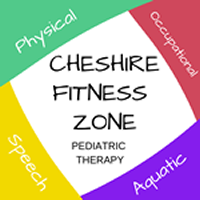Overtraining can result in a number of unwanted complications, including long term pain and disability, if left unchecked. When it comes to our bodies, pain is unacceptable while discomfort is tolerable. Actually, there is a threshold of pain tolerance that is distinct to each individual. It is critical to understand this limit and respect it when working out.
When your body is pushed beyond this threshold, injuries are apt to happen, sometimes long term damage. In contrast, the right approach towards rest, nutrition, and exercise can increase this limit for everyone. When done in a slow and progressive manner, but under the supervision of an expert, for instance a physical therapist, injuries are avoidable resulting to stronger bodies.
When does over-training syndrome occur?
Overtraining syndrome happens when a person partakes in new activities that the body is not accustomed to. It also happens when an individual does the same actions repeatedly for a prolonged duration of time, in most cases, in absence of stretching and warm up routines. Specific body parts end up hurting, and you will notice impairments in performance, coordination and movement. People with overtraining injuries display effects such as suppressed appetite in severe cases, sleep pattern disturbances, and fatigue.
Can physical therapy help?
Like earlier mentioned, overtraining can lead to all kinds of unwanted issues if left unchecked. Physical therapy can be used in the prevention of overtraining. A wide array of physical therapy techniques can be utilized prevent, evaluate and treat injuries related to overtraining. Some of the commonest physical therapy techniques used includes:
• Therapeutic massage: This is one of the best options that can be opted for to relieve inflammation and pain associated with overtraining. A quality therapeutic massage results in increased blood circulation and soft tissue relaxation.
• Clinical Pilates: This is a specialized workout program that helps build core and pelvic floor strength, improving flexibility while at it.
• Aquatic therapy: The soothing effect of water allows the body to gain flexibility, coordination and strength in a gradual manner. The buoyancy of water provides mild support that let the patient to execute movements that might not otherwise be possible.
• Manual mobilization and manipulation: Using manual mobilization and manipulation, physical therapists are able to increase joint mobility and facilitate a return to function utilizing a combination of active and passive techniques.
• Dry needling: Bearing close similarities to acupuncture, dry needling is utilized to stimulate the body’s natural healing abilities, alleviate pain and release muscle tension.
When less is more
Injuries that occur due to overtraining either develop overtime or happen unexpectedly. With proper supervision from a physical therapist and appropriate precautions, you can enjoy an active lifestyle without discomfort and pain. Simple ways to prevent overtraining include:
• Adequate stretching and warm up
• Wearing appropriate footwear
• Gradual and progressive exercise
Your physical therapist will teach you how to utilize the right techniques, breathing and motion when working out. Moreover, he will also build a training program with appropriate degree of frequency and intensity. Remember, the objective is to challenge, but not overwhelm the patient. By remaining within your exercising limit, you can expect to see significant improvements in mobility, flexibility and strength very soon.



